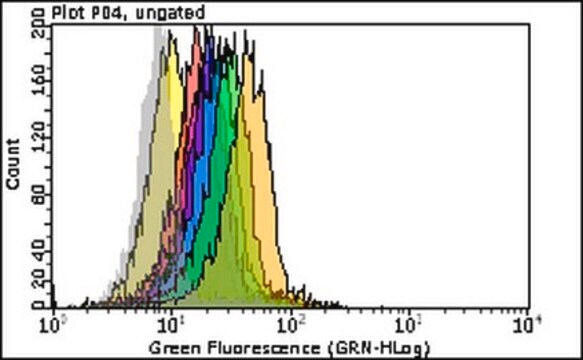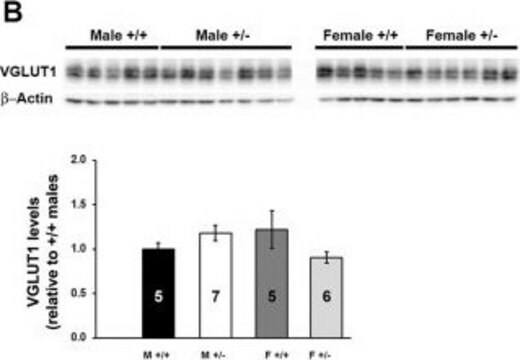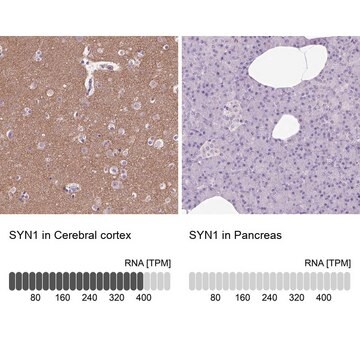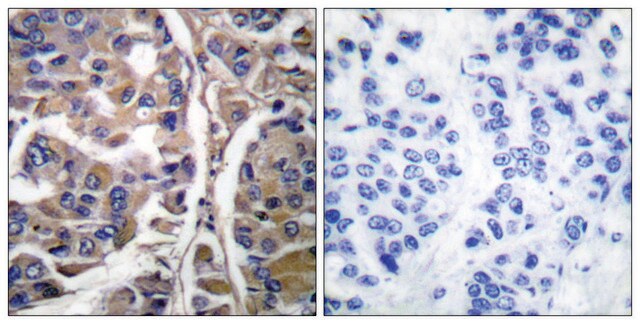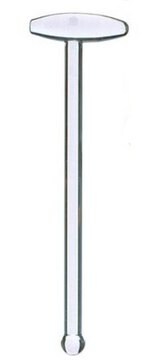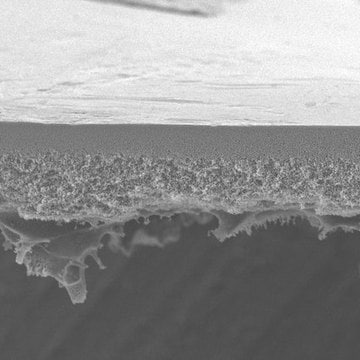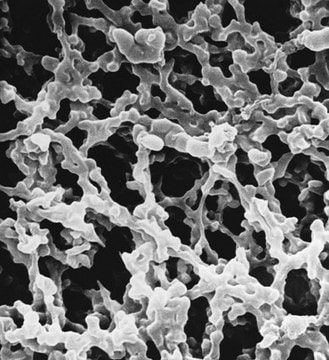MABT845
Anti-Cytokeratin-20 Antibody, clone XQ1
clone XQ1, from mouse
Synonim(y):
Keratin, type I cytoskeletal 20, CK-20, Keratin-20, K20
About This Item
Polecane produkty
pochodzenie biologiczne
mouse
forma przeciwciała
purified antibody
rodzaj przeciwciała
primary antibodies
klon
XQ1, monoclonal
reaktywność gatunkowa
mouse
spodziewany brak reakcji z
human
opakowanie
antibody small pack of 25 μg
metody
immunofluorescence: suitable
immunohistochemistry: suitable (paraffin)
western blot: suitable
izotyp
IgMκ
numer dostępu NCBI
numer dostępu UniProt
docelowa modyfikacja potranslacyjna
unmodified
informacje o genach
human ... KRT20(54474)
mouse ... Krt20(66809)
Opis ogólny
Specyficzność
Immunogen
Zastosowanie
Western Blotting Analysis: A representative lot detected Cytokeratin-20 in Western Blotting applications (Zhou, Q., et. al. (2003). Mol Biol Cell. 14(7):2959-71).
Cell Structure
Jakość
Immunohistochemistry (Paraffin) Analysis: A 1:50 dilution of this antibody detected Cytokeratin-20 in mouse colon tissue sections.
Opis wartości docelowych
Postać fizyczna
Przechowywanie i stabilność
Inne uwagi
Oświadczenie o zrzeczeniu się odpowiedzialności
Nie możesz znaleźć właściwego produktu?
Wypróbuj nasz Narzędzie selektora produktów.
Certyfikaty analizy (CoA)
Poszukaj Certyfikaty analizy (CoA), wpisując numer partii/serii produktów. Numery serii i partii można znaleźć na etykiecie produktu po słowach „seria” lub „partia”.
Masz już ten produkt?
Dokumenty związane z niedawno zakupionymi produktami zostały zamieszczone w Bibliotece dokumentów.
Nasz zespół naukowców ma doświadczenie we wszystkich obszarach badań, w tym w naukach przyrodniczych, materiałoznawstwie, syntezie chemicznej, chromatografii, analityce i wielu innych dziedzinach.
Skontaktuj się z zespołem ds. pomocy technicznej